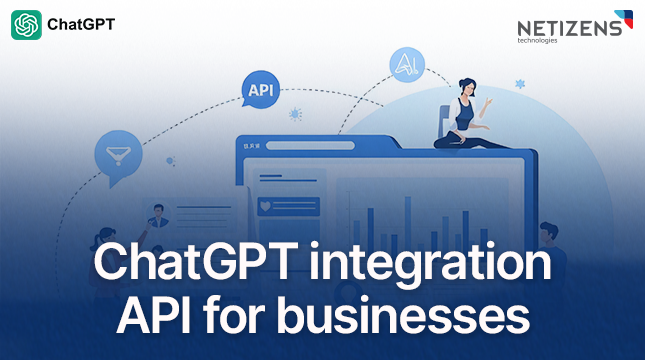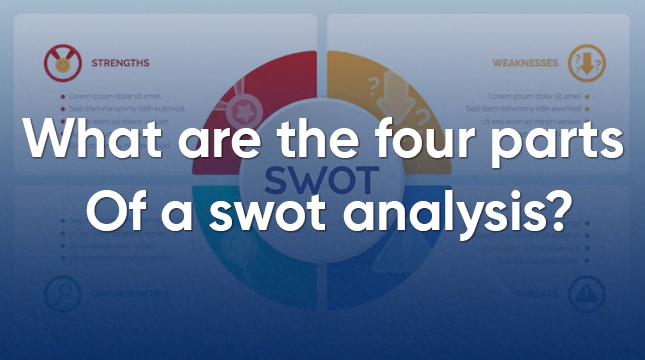This website uses cookies so that we can provide you with the best user experience possible. Cookie information is stored in your browser and performs functions such as recognising you when you return to our website and helping our team to understand which sections of the website you find most interesting and useful.
Conquering the Cloud: A Comprehensive Guide to the AZ-104 Exam
In today’s ever-evolving technological landscape, cloud computing has become an indispensable tool for businesses of all sizes. Microsoft Azure, a leading cloud platform, empowers organizations to build, deploy, and manage applications across a global network of data centers. To navigate and optimize this powerful platform, the AZ-104: Microsoft Azure Administrator Associate certification equips individuals with the necessary skills and knowledge. This comprehensive guide will unveil everything you need to know about the AZ-104 exam, from its core concepts to effective study strategies, ensuring you confidently conquer the cloud.
Introduction
What is the AZ-104 Exam?
The AZ-104 exam validates your proficiency in administering Microsoft Azure infrastructure. It assesses your ability to implement, manage, and monitor various Azure services, including security, storage, networking, and virtual machines. Passing this exam demonstrates a strong foundation in Azure administration, making you a valuable asset in any cloud-focused organization.
Who Should Take the AZ-104 Exam?
This certification is ideal for IT professionals who aspire to manage and administer Azure environments. Whether you’re a system administrator, cloud architect, or developer, the AZ-104 equips you with the expertise to excel in a cloud-based role. Additionally, individuals with a background in on-premises infrastructure can leverage this certification to transition smoothly to the cloud.
Benefits of AZ-104 Certification
Earning the AZ-104 certification unlocks a multitude of benefits for both individuals and organizations. Here are some key advantages:
- Enhanced Career Prospects: The AZ-104 certification demonstrates your expertise in Azure administration, making you a highly sought-after candidate in the job market. Employers actively seek individuals with this credential due to the increasing demand for skilled cloud professionals.
- Increased Earning Potential: Studies indicate that individuals with cloud certifications like the AZ-104 often command higher salaries compared to their non-certified counterparts.
- Validation of Skills: The AZ-104 certification serves as a tangible recognition of your knowledge and skills in Azure administration. It showcases your commitment to professional development and staying ahead of the curve in cloud technology.
- Improved Productivity and Efficiency: The knowledge gained through AZ-104 preparation empowers you to optimize Azure resources, streamline cloud operations, and ultimately enhance your organization’s overall IT efficiency.
Now that you understand the significance of the AZ-104 exam, let’s delve deeper into its specifics.
AZ-104 Exam Overview
Before embarking on your AZ-104 journey, familiarizing yourself with the exam format and content areas is crucial.
Exam Format
The AZ-104 exam is a proctored, online assessment consisting of multiple-choice and multiple-answer questions. You’ll have a designated timeframe to complete the exam, so effective time management is essential.
Exam Content Areas (Weighted)
The AZ-104 exam covers a broad range of Azure administration topics, with each area holding a specific weight in the overall score. Here’s a breakdown of the key content areas:
-
Manage Identities and Governance (20%) This section assesses your understanding of Azure Active Directory (AAD) for user authentication, authorization, and access control. Additionally, it covers security best practices and governance tools within Azure.
-
Implement and Manage Storage (15%) This area focuses on your ability to manage various Azure storage solutions, including Azure Blob storage for unstructured data, Azure Files for cloud-based file shares, and Azure Disk Storage for virtual machine disks.
-
Deploy and Manage Azure Compute Resources (25%) Here, you’ll demonstrate your expertise in provisioning and managing Azure virtual machines, including VM configurations, scaling, and security. You’ll also encounter questions regarding Azure Container Instances and Azure Kubernetes Service (AKS) for containerized applications.
-
Configure and Manage Virtual Networks (20%) This section evaluates your knowledge of creating and managing virtual networks in Azure, including subnets, security groups, and network security best practices. Additionally, it covers Azure virtual private networks (VPNs) for secure connectivity between on-premises and cloud environments.
-
Monitor and Backup Azure Resources (20%) The final section focuses on your ability to monitor Azure resources for performance and health. It also assesses your understanding of backup and disaster recovery solutions within the Azure platform.
Understanding the weightings of each content area allows you to tailor your study plan accordingly.
Building Your AZ-104 Skillset
Now that you’ve grasped the exam format and content areas, it’s time to equip yourself with the necessary knowledge and skills.
Prerequisites for Success (Continued)
While there are no formal prerequisites for taking the AZ-104 exam, a solid foundation in IT concepts and some experience with cloud computing principles are highly beneficial. Familiarity with Windows Server administration and basic networking knowledge can also prove advantageous.
Recommended Learning Resources
To effectively prepare for the AZ-104 exam, a variety of resources are available to cater to different learning styles. Here’s a breakdown of some valuable options:
-
Microsoft Official Learning Resources: Microsoft offers a comprehensive learning path for the AZ-104 exam, including instructor-led courses, online learning modules, and self-paced labs. These resources directly align with the exam objectives, ensuring you’re covering all the essential topics.
-
Third-Party Training Materials: Numerous reputable training providers offer video courses, practice exams, and study guides specifically designed for the AZ-104 exam. These resources can provide diverse perspectives and additional practice opportunities beyond Microsoft’s official offerings.
-
Hands-on Labs and Practice Exams: Solidify your understanding by actively working with Azure services through hands-on labs. Microsoft provides a free Azure trial account, allowing you to experiment and gain practical experience. Additionally, utilize practice exams to simulate the actual exam format and identify areas requiring further study.
Conquering Each Exam Content Area (Deep Dive)
Let’s delve deeper into each of the core AZ-104 content areas, exploring key concepts and resources to enhance your understanding.
Manage Identities and Governance (Deep Dive)
This section focuses on your mastery of Azure Active Directory (AAD) and security best practices. Here’s what you need to know:
-
Azure Active Directory (AAD): AAD serves as the central identity and access management service in Azure. Grasp how to create and manage user accounts, assign roles and permissions, and leverage multi-factor authentication (MFA) for enhanced security.
-
Role-Based Access Control (RBAC): Understand how to implement RBAC within Azure to control access to resources based on user roles and permissions.
-
Azure Security Center: This built-in security service provides threat detection, vulnerability scanning, and security recommendations for your Azure resources. Familiarize yourself with its functionalities and how to leverage it for proactive security posture.
Implement and Manage Storage (Deep Dive)
Optimizing storage solutions is crucial for any Azure environment. Here’s a breakdown of the key storage services you’ll encounter:
-
Azure Blob Storage: This highly scalable and cost-effective service is ideal for storing unstructured data like text files, media content, and backups. Understand how to create and manage storage accounts, upload and download data, and leverage access control mechanisms.
-
Azure Files: Imagine file shares accessible from anywhere in the world. Azure Files provides a managed file sharing service, allowing you to deploy cloud-based file shares accessible across various operating systems.
-
Azure Disk Storage: For virtual machines in Azure, persistent storage is essential. Azure Disk Storage offers a range of options, including HDDs for cost-effectiveness and SSDs for high-performance applications.
By understanding these core storage solutions, you’ll be well-equipped to manage data effectively within your Azure environment.
Deploy and Manage Azure Compute Resources (Deep Dive)
Virtual machines (VMs) are the workhorses of cloud computing. Here’s what you need to know about deploying and managing them in Azure:
-
Provisioning and Managing VMs: Explore how to create VMs in Azure, selecting the appropriate VM size, configuring operating systems, and managing them throughout their lifecycle, including scaling and patching.
-
VM Security: Security is paramount. Understand how to secure your VMs using features like security groups, just-in-time (JIT) access, and Azure Security Center for comprehensive threat protection.
-
Azure Container Instances and Azure Kubernetes Service (AKS): While VMs are versatile, containers are becoming increasingly popular for deploying microservices applications. Familiarize yourself with Azure Container Instances for lightweight container deployments and AKS for managing containerized applications at scale.
Mastering these concepts empowers you to deliver and manage compute resources efficiently within your Azure infrastructure.
Configure and Manage Virtual Networks (Deep Dive)
The backbone of any cloud environment is its network. Here’s what you’ll need to understand about virtual networks in Azure:
-
Creating and Managing Virtual Networks: Grasp how to create virtual networks in Azure, define subnets for logical segmentation, and configure security groups to control network traffic flow.
-
Network Security Best Practices: Security breaches can be catastrophic. Learn about best practices for securing your Azure network, including implementing network security groups (NSGs), Azure Firewall for advanced threat protection, and private endpoints for restricting inbound traffic.
-
Azure Virtual Private Networks (VPNs): Connecting your on-premises infrastructure to Azure securely is essential for hybrid cloud deployments. Understand how to configure Azure VPNs to establish secure tunnels for seamless communication between your on-premises network and Azure resources.
By mastering these concepts, you’ll be equipped to design and manage secure and efficient virtual networks within your Azure environment.
Monitor and Backup Azure Resources (Deep Dive)
Maintaining the health and security of your Azure resources is crucial. Here’s what you’ll need to know about monitoring and backup solutions:
-
Azure Monitor: This comprehensive service provides insights into the performance and health of your Azure resources. Learn how to leverage Azure Monitor for resource logs, metrics, and alerts to proactively identify and address potential issues.
-
Backup and Disaster Recovery (DR): Data loss can be devastating. Explore Azure Backup for creating scheduled backups of your Azure resources and Azure Site Recovery for replicating your on-premises workloads to Azure for disaster recovery scenarios.
By understanding these tools and practices, you’ll ensure the availability and recoverability of your critical Azure resources.
This concludes our deep dive into the core content areas of the AZ-104 exam. Remember, consistent practice and a well-rounded study plan are key to conquering this certification.
Exam Tips and Strategies
Now that you’re armed with a comprehensive understanding of the AZ-104 exam content, let’s explore some effective strategies to maximize your success:
-
Develop a Study Plan: Create a structured study plan that allocates sufficient time for each content area. Utilize a calendar to schedule study sessions and track your progress.
-
Time Management During the Exam: The AZ-104 exam is time-bound. Practice managing your time effectively during practice exams to avoid running out of time on the actual exam.
-
Utilize Practice Tests Effectively: Practice exams are invaluable tools for assessing your understanding and identifying areas requiring further focus. Utilize practice exams from reputable sources and analyze your performance to pinpoint knowledge gaps.
-
Stay Calm and Focused: Taking an exam can be stressful. Remember to take deep breaths and approach the exam with a calm and focused mindset. Read each question carefully and don’t hesitate to revisit questions if time allows.
Conclusion: Owning Your Cloud Journey with AZ-104
By dedicating yourself to studying the core concepts, practicing with hands-on labs, and implementing effective exam strategies, you’ll be well-positioned to conquer the AZ-104 exam. This certification signifies your expertise in Azure administration and opens doors to exciting career opportunities in the ever-evolving cloud landscape. Remember, the cloud journey is a continuous learning process. Leverage the AZ-104 exam as a springboard to keep expanding your knowledge and stay ahead of the curve in cloud technologies.

Let's Start Your Project
Get free consultation for your digital product idea to turn it into reality!
Get Started





